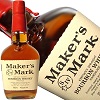
Last month, whisky brand Maker’s Mark reduced its alcohol proof from 90% to 84%, sparking outcry as customers flocked to Facebook and Twitter to discuss ‘watered-down whisky’ and switching to rival brands. After nine days of social media, national newspaper and TV coverage, the brand was forced into an extraordinary U-turn. This case study from Gemma Storey at Carrot Communications takes a day-by-day look at how the crisis unfolded for the premium bourbon brand and how it could have managed things differently.
More on this case study…
Brand: Maker's Mark/ BEAM | Sector: FMCG, Food and Beverage | Country: US, UK | Objective: Social media, Crisis Management, email, PR | Format: Social Media

There’s one thing I know about whiskey drinkers, it’s that they take their tipple of choice seriously. But back in 2004 when Jack Daniel’s lowered the proof of its whiskey, patrons may have been angry enough to take to forums, but they didn’t have social media channels on which to vent. Unfortunately for Maker’s Mark, people are now happy to take brands to task via social media, and they exercised their collective outrage recently over Maker’s announcement that it would be reducing the alcohol content of its whiskey.
So, what actually happened?
Day one: Maker’s Mark emails loyal customers
9th February: the brand emailed its loyal customers to let them know that it would be reducing the alcohol content of Maker’s Mark from 90% proof, to a mere 84%.
Drinkers were not happy and took to the brand’s Facebook page to complain.

Day two: The email is picked up by news sources
10th February: the news is reported by US and UK national press and online news sources (the Huffington Post article netted more than 2,000 shares on Facebook and 1,200 emails alone).
Day three: The whiskey’s not the only thing being watered down…
11th February: CNN Money reported that Maker’s Mark was going to start watering down its whiskey due to excessive demand. The CEO (and son of the founder) even went as far as to say that drinkers “wouldn’t notice the change”.

It was also on this day that the share price of Maker’s Mark owners, BEAM, took a hit.
Day four: Twitter explodes
12th February: With the national media exposure, the reaction from Twitter began to take off.

(Chart courtesy of: http://wearesocial.net/)

Time interviewed a disappointed cocktail bar owner. Meanwhile, Buzzfeed didn’t think the news was that bad. As reported by The New Statesman, Maker’s Mark continued to issue statements in an attempt to reassure customers that it wouldn’t ruin the drink.
Day five: More media coverage
13th February: Food and drink site firstwefeast.com interviewed several industry names about the backlash, with one pointing out that even if the brand was right, and people couldn’t taste the difference, they would still feel cheated. A drinks brand with the tradition and heritage of of Maker’s Mark has more to worry about than just what’s in the bottle.
Television news started to report on the social media backlash and online media coverage of the move.
The brand continued to issue statements behind its age-restricted site:
“Since we’re a one-brand company, that’s never purchased bourbon from other distillers when supplies are short, forecasting is very difficult…
“Some people are asking why we didn’t just raise the price if demand is an issue. We don’t want to price Maker’s Mark out of reach.
“And, with regard to the price, the value of Maker’s Mark isn’t set by alcohol volume. It’s about the quality of the recipe and ingredients that go into it, all the handcrafting that goes into the production and how it tastes.”
Day six: Love is not in the air for Maker’s Mark
14th February: Forbes questioned the strategy of a high-quality bourbon brand essentially questioning its customers’ ability to distinguish taste (Maker’s Mark had initially said that customers wouldn’t be able to tell the difference, but statements were now emphasising the brand’s extensive taste testing instead – which suggested a slight issue with miscommunication at the outset).

Day seven: Kick a brand when it’s down, why don’t you?
15th February: Gizmodo posted an article saying that it didn’t matter that Maker’s Mark was watering down the whiskey, because people were only paying for the name anyway, essentially saying that the drink wasn’t worth the price tag.
Finally on day nine
17th February: Maker’s Mark reversed the decision, citing the reaction of their customers. Maker’s Mark COO Rob Samuels said: “What we’ve learned is that this is the customer’s brand.”

Cue a deluge of coverage, both UK and US about Maker’s Mark being forced into a U-turn by a social media backlash. By the 19th, people had begun to speculate that the whole thing was a publicity stunt.
Whatever the reason for the decision, customers of a much-loved brand like Maker’s Mark are passionate advocates, and will challenge anyone that attacks it. Including the brand itself.
By Gemma Storey
Carrot Communications
This case study was originally published by social media management firm eModeration.